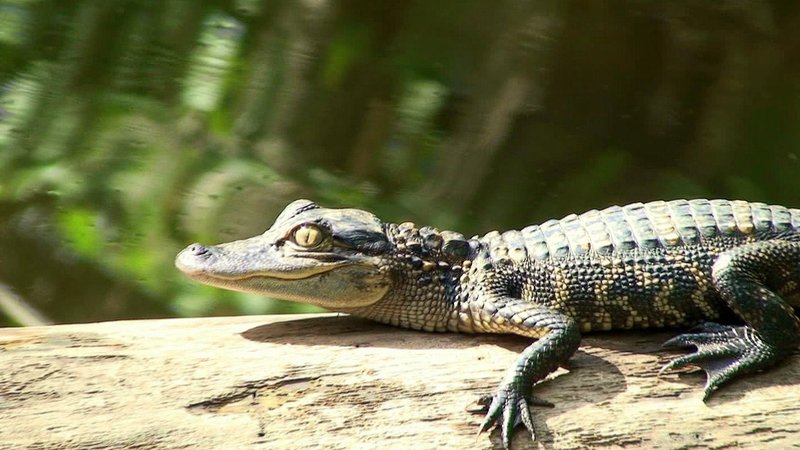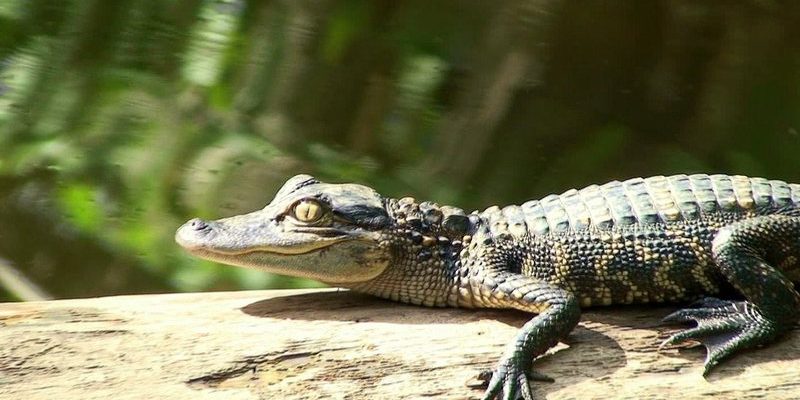
Learning to recognize alligators can be as easy as picking out a distinct celebrity from their silhouette. With their robust bodies, long tails, and specific habitats, they have some traits that stand out once you know what to look for. Let’s dive into how to identify these fascinating reptiles and what makes them unique.
Recognizing Alligator Characteristics
To identify an alligator, start by getting familiar with their physical features. Alligators are large reptiles with a broad snout and dark, textured skin that often blends into their surroundings. These features help them camouflage in murky waters or among the water reeds, making them tricky to spot if you’re not paying attention.
– Size and Shape: Adult alligators typically measure between 8 to 15 feet in length. You might be wondering how to gauge their size from a distance—look for their big, rounded snouts and wide bodies, which are hallmark features.
– Coloration: They generally appear dark green or greyish-black, which helps them hide in muddy waters—a clever trick of nature! They might look even darker when wet.
Understanding these key characteristics can make spotting an alligator much easier. Their unique features are quite different from those of a crocodile, which has a narrower snout and lighter coloring.
Where Alligators Live
Another important aspect of identifying an alligator is knowing their preferred habitats. Alligators are primarily found in freshwater environments like swamps, marshes, rivers, and lakes. They’re true natives of the southern United States, with populations in places like Florida and Louisiana. You might often come across them basking in the sun on a warm morning or swimming quietly in the water.
– Home Sweet Home: Look for areas with dense vegetation, which provide shelter and allow alligators to stay hidden. They love to lounge on warm banks—so if you see large, dark shapes near the water’s edge, that could be your clue.
– Behavior: If it’s hot, you might see them basking on land, but they spend most of their time submerged. If you see ripple effects on the water’s surface, there’s a good chance an alligator is lurking just below.
Learning about their habitats and behaviors helps you predict where you might spot them and enhances your overall wildlife experience.
Spotting an Alligator’s Eyes and Snout
Alligators are known for their sharp eyes and distinctive snouts. These features are both fascinating and crucial for identification.
– Eyes: When you’re looking for an alligator, pay attention to the *glint* of their eyes above the water. Their eyes are positioned on top of their heads, allowing them to see while mostly submerged—kind of like a periscope! At dusk or dawn, you might even see a flash of reflective light; that’s their tapetum lucidum at work.
– Snout: Their broad, rounded snouts almost resemble a shovel. This is a key feature that sets them apart from crocodiles, which have narrower, triangular snouts. A good rule of thumb is that if you see a wide head with a flat snout, you’re likely looking at an alligator.
Understanding how to spot these prominent features can greatly increase your chances of successfully identifying an alligator in the wild.
Listening for Alligator Sounds
Believe it or not, alligators communicate through a variety of sounds that can help you identify them. These sounds are not only intriguing but also give hints about their presence.
– Grunting and Bellowing: During mating season, you might hear deep bellows echoing through the wetlands. It sounds a bit like a low rumble or roar, and it can be surprisingly loud! This signifies that there’s an alligator nearby—especially if you’re by the water during spring or early summer.
– Hissing: If an alligator feels threatened, it may hiss as a warning. This sound can send chills down your spine if you hear it unexpectedly, but it’s simply a sign to back off.
Listening for these distinctive sounds can help you identify alligators even if you can’t see them right away, adding another layer to your wildlife watching experience.
Distinguishing Alligator Behavior
Behavior is another important clue when it comes to identifying an alligator. Understanding what they do in their natural habitat can make it easier to spot them.
– Basking: Alligators often lie on the banks of bodies of water, soaking up the sun. If you see a large creature lounging, it could well be an alligator taking a break.
– Swimming: When alligators swim, they move smoothly with their powerful tails, leaving little disturbance in the water. You might notice small ripples or bubbles on the surface, indicating their presence beneath the water.
Observing their behavior and the way they interact with their environment can give you valuable insights into identifying these fascinating reptiles.
Safety Tips for Encountering Alligators
While alligators are captivating creatures, they also demand respect and caution. Knowing how to safely observe them is crucial.
– Keep Your Distance: Always maintain a safe distance from any alligator you encounter. It’s best to stay at least 30 feet away to avoid startling them. Never approach or provoke an alligator, as they can move surprisingly fast over short distances.
– Stay Calm: If you find yourself near an alligator, it’s important to remain calm and back away slowly. Sudden movements can provoke them, so keep it cool and collected.
Remember, respect for wildlife is key. Understanding how to observe alligators safely enhances your experience and ensures that both you and the alligator remain unharmed.
Identifying alligators in the wild can be an exciting adventure! From recognizing their unique physical traits and behaviors to understanding their habitats and sounds, you’re well on your way to spotting these magnificent creatures with confidence. Whether you’re enjoying a nature trail or exploring a swampy area, keep your eyes peeled for those telltale signs.
And while you may come across an alligator lounging or swimming, just remember to respect these animals from a safe distance. After all, the thrill of wildlife watching comes with a responsibility to protect and appreciate these incredible reptiles in their natural surroundings. Happy alligator spotting!

